Dominican Republic
Atlantic Standard Time (AST), UTC−4 year-round
No daylight saving time observed
Sunrise ~06:00, sunset ~18:00 (varies by season)
Same as Puerto Rico and Barbados
Dominican Peso (DOP), symbol “RD$”
1 USD ≈ RD$55 (rates fluctuate)
ATMs widespread; credit cards accepted in most hotels and restaurants
10% service charge customary; tip 5–10%
February 27 – Independence Day (1844)
August 16 – Restoration Day (1865)
Parades, concerts, flag-raising ceremonies nationwide
Public holiday; book travel & lodging early
Visa-Free Countries
Visa on Arrival Countries
E-Visa Countries
Visa Required Countries
Culture
The Dominican Republic’s culture is a vibrant fusion of Taino heritage, Spanish colonial influence and African rhythms. Music—merengue, bachata and dembow—drives daily life from Santo Domingo’s city streets to mountain villages. Family and community gatherings around hearty meals reflect a warm hospitality that greets every visitor.
- Music & Dance: Merengue (fast-paced accordion & tambora) and bachata (guitar-driven romance) reign supreme; local festivals feature DJs spinning dembow.
- Cuisine: Staples like sancocho (hearty stew), mangú (mashed plantains) and mofongo showcase root vegetables and pork; street vendors serve empanadas and freshly squeezed jugo de naranja.
- Language & Literature: Dominicans speak a distinctive Spanish dialect, rich in idioms; celebrated writers include Juan Bosch and Julia Alvarez.
- Festivals & Carnivals: Carnival in February features elaborate costumes, carrozas (floats) and Los Diablos Cojuelos masked dancers in La Vega and Santo Domingo.
- Visual Arts & Crafts: Larimar and amber jewelry workshops in Barahona; vibrant mural art in Colonial Zone streets.
- Religious Traditions: Catholicism blends with folk beliefs; patron saint festivities (fiestas patronales) celebrate local church founders with processions and fireworks.
Tourism & Best Sites to Visit
From colonial plazas and lush mountains to turquoise seas and safari ventures, the Dominican Republic offers an extraordinary range of experiences. Whether exploring UNESCO-listed Santo Domingo or relaxing in all-inclusive beachfront resorts, every region reveals its own charm.
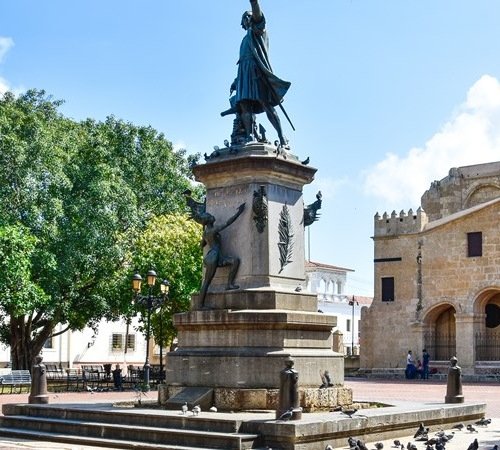
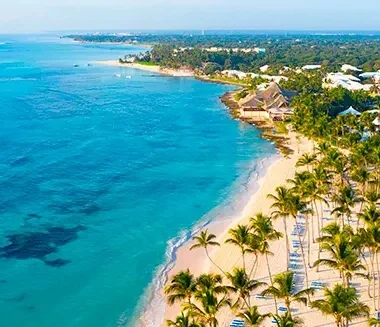
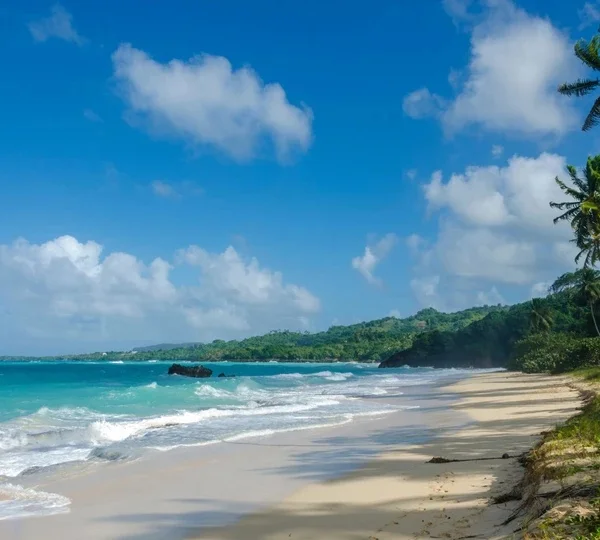
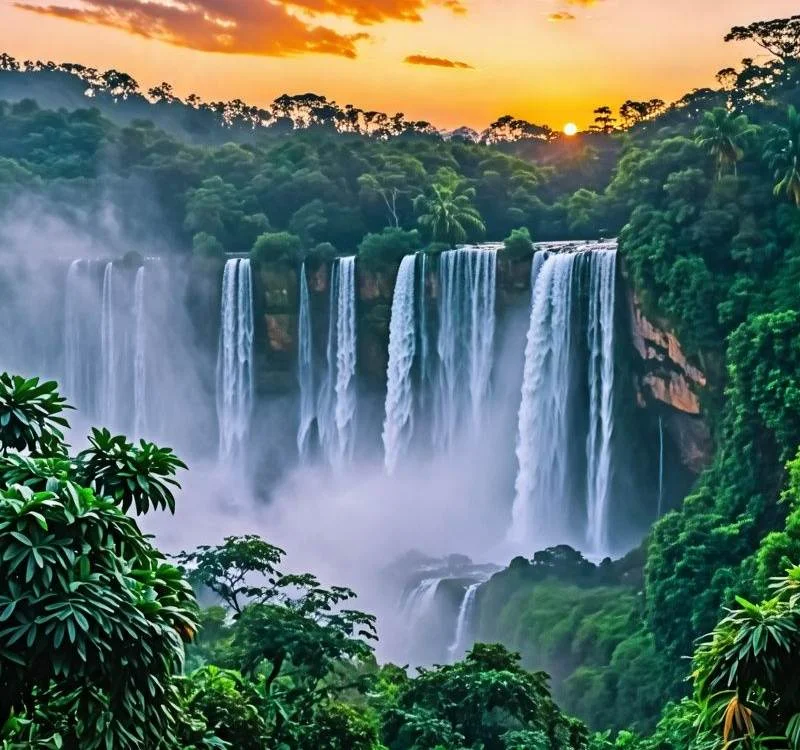
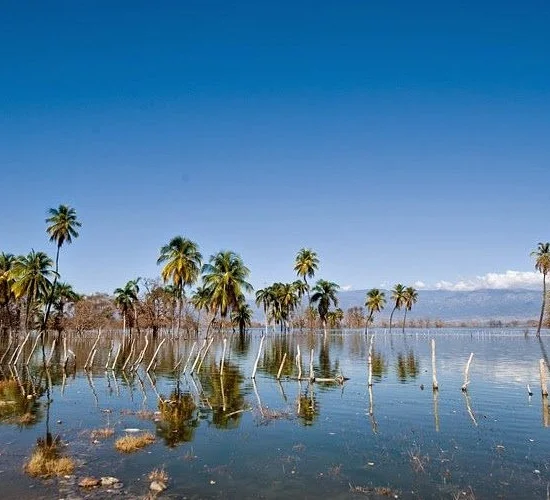

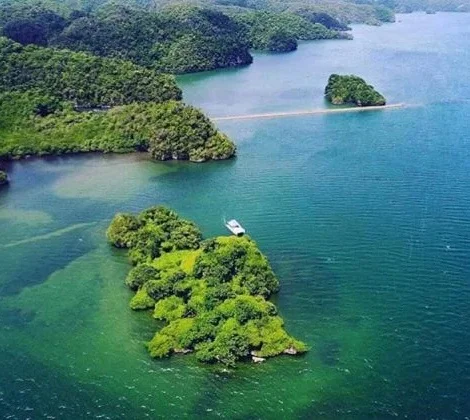

-
Zona Colonial The heart of Santo Domingo, Zona Colonial, is the oldest European settlement in the Americas and a UNESCO World Heritage Site. Wander cobblestone streets flanked by pastel-hued buildings dating to the 16th century. Key landmarks include the Catedral Primada de América (the first cathedral in the New World), the Alcázar de Colón (Christopher Columbus’s son’s palace) and the Museum of the Royal Houses. Courtyards hide quaint cafés serving café con leche and empanadas, while plazas host live merengue performances. By night, lantern-lit alleys come alive as restaurants and bars pour local rum and serve mofongo to lively crowds.
-
Punta Cana Stretching along 50 km of white-sand beaches and turquoise waters, Punta Cana is synonymous with all-inclusive luxury resorts and world-class golf courses. Bavaro Beach tops lists for its coral reefs, palm-lined shore and water-sports—snorkeling, kite-surfing and deep-sea fishing. Inland, ecological reserves like Indigenous Eyes host fresh-water lagoons ideal for kayaking. Spas offer volcanic mud wraps, while evening beach parties feature DJs and fire dancers. Despite rapid development, conservation efforts protect sea-turtle nesting grounds and nearby Palma Real Wetlands preserve resident bird species.
-
Samaná Peninsula A mecca for eco-adventurers, the Samaná Peninsula boasts lush tropical forests, cascading waterfalls and prime humpback-whale watching (January–March). Zip-line through canopy at Los Haitises National Park, home to ancient Taino cave pictographs and mangrove-lined bays accessible only by boat. The El Limón waterfall plunges 50 meters into a jade pool—reachable via horseback or hiking trail. Las Terrenas, a seaside village, offers French-influenced cuisine and kite-surfing hotspots. Each morning, whale-watching boats depart from Sánchez, promising up-close encounters with mother-calf pairs in sheltered bays.
-
Jarabacoa Nestled in the Central Mountain Range at 400–600 meters elevation, Jarabacoa’s cool climate and river valleys make it the Dominican Republic’s “City of Eternal Spring.” Adventure seekers raft down the Yaque del Norte, the Caribbean’s longest river, or rappel waterfalls in nearby Jimenoa Gorge. Hike to Pico Duarte’s base camp through cloud forests thick with bromeliads and orchids. Local coffee farms open their doors for tours and tastings of high-altitude arabica beans. Each spring, air shows and paragliding festivals showcase aerial acrobatics against a backdrop of verdant peaks.
-
Lago Enriquillo Located in the southwestern basin, Lago Enriquillo is the Caribbean’s largest and lowest lake, lying 44 meters below sea level. Its hypersaline waters host American crocodiles and endangered rhinoceros iguanas. Boat tours to Isla Cabritos reveal flamingos wading in shallows, while desert vegetation of cacti and mesquite contrasts sharply with distant Sierra de Neiba peaks. Nearby Bahía de las Águilas, accessed via rugged roads, ranks among the region’s most unspoiled beaches—ideal for camping under star-filled skies.
-
Altos de Chavón Perched on a limestone cliff overlooking the Chavón River, Altos de Chavón is a faithful recreation of a 16th-century Mediterranean village designed by Dominican architect Teófilo Gautier. Stroll cobbled piazzas lined with artisan workshops producing leather goods and ceramics. The open-air amphitheater, modeled on ancient Greek design, hosts international concerts and cultural events. Nearby, the Regional Museum of Archaeology displays pre-Columbian artifacts, while restaurants serve seafood paellas and local wines. Scenic river cruises launch from the cobblestone quay below.
-
Los Haitises National Park Covering mangrove-fringed islets and karst hills, Los Haitises National Park protects one of the Caribbean’s most pristine ecosystems. Kayak through ancient Taino cave systems adorned with pictographs and petroglyphs. Bird-watchers seek endemic species like the Hispaniolan trogon among towering mahogany and royal palm groves. Boat tours reveal hidden waterfalls cascading into tidal creeks. Conservation programs invite visitors to participate in reforestation and archaeological digs. Lodges on the park’s edge offer rustic cabins with waterfront hammocks swaying beneath coconut palms.
-
Pico Duarte At 3 098 meters, Pico Duarte is the highest peak in the Caribbean, drawing hikers on multi-day treks through pine forests, paramo grasslands and alpine meadows. Routes begin near Constanza, passing waterfalls and remote villages where families welcome travelers for home-cooked stews. Campsites at La Compartición and La Ciénaga provide basic shelter; porters carry gear along narrow trails. Summit day dawns at 3 000 m with panoramic views of Hispaniola’s mountain spine and, on clear mornings, glimpses of Haiti’s peaks. Guides emphasize altitude acclimation and Leave No Trace practices.
Transportation
Navigating the Dominican Republic combines modern highways with rustic rural roads. Public and private carriers link cities, while local motoconchos (motorcycle taxis) and guaguas (shared vans) serve neighborhood routes. Inland, mountain trails and river valleys may require 4×4 vehicles.
- Santo Domingo Metro: Two lines serve the capital’s key corridors; clean, air-conditioned and affordable (RD$30 per ride).
- Intercity Buses: Caribe Tours and Metro lines connect Santo Domingo, Santiago, Punta Cana and beyond; VIP coaches feature reclining seats and Wi-Fi.
- Guaguas & Conchos: Shared minibuses (“guaguas”) on fixed routes; motoconchos weave through traffic in San Francisco and Cristo Rey.
- Car & 4×4 Rentals: International agencies at airports; 4×4 advised for off-road in Samaná and Enriquillo regions.
- Domestic Flights: Regular flights by Sky High and Arajet between SDQ, AZS, STI and POP; 45-minute hops.
- Ferries: Seasonal connections to Saona Island from Bayahibe; rustic boats to Cayo Levantado from Samaná.
- Bike Tours: Guided cycling through coffee plantations and colonial streets; helmets required.
Airports
Six international airports and regional airstrips ensure broad access—from historic Santo Domingo to resort hubs and rural retreats. Airlines range from full-service carriers to budget startups.
- Las Américas Intl. (SDQ): Primary gateway, 30 km east of Santo Domingo; US, Europe and Latin American flights; car rentals and shuttles.
- Punta Cana Intl. (PUJ): In La Altagracia; over 5 000 m runway; all-inclusive resort shuttles and taxis.
- Gregorio Luperón Intl. (POP): Near Puerto Plata; access to Amber Cove and North Coast beaches; seasonal charters.
- Cibao Intl. (STI): Serves Santiago de los Caballeros; modern terminal with lounges and local eateries.
- La Romana Intl. (LRM): Boutique airport for Altos de Chavón and Casa de Campo resort; small-jet friendly.
- El Catey Intl. (AZS): In Samaná; convenient for whale-watching season and eco-lodges; limited ground services.
Visa & Travel
| Nationality/Region | Entry Status | Max Stay | Key Requirements |
|---|---|---|---|
| USA, Canada, UK, EU, Japan, Australia | Visa Free | Up to 90 days | Passport valid ≥6 months, return/onward ticket |
| CARICOM member states | Visa Free | Up to 90 days | Valid passport or national ID |
| China, Russia, India, Vietnam | Visa Required | Varies by bilateral agreement | Apply at Dominican embassy; invitation letter; bank statements |
| Transit (all nationalities) | Transit Allowed | ≤24 hours | Confirmed onward ticket |
Health: Yellow fever certificate required if arriving from endemic areas; recommended vaccinations: hepatitis A, typhoid.
Customs: Duty-free allowance: 200 cigarettes, 50 cl alcohol, $200 USD of other goods.
Safety Tips: Remain vigilant in crowded markets; carry photocopies of documents; use hotel safes.
Money Matters: Banks open Mon–Fri 08:30–16:00; ATMs dispense DOP and USD; avoid unlicensed exchangers.
Etiquette: Greet with “¡Buenas!” or handshake; modest dress in rural areas; respect church services and cultural sites.
- Asia
- Singapore
- Japan
- South Korea
- Africa
- Seychelles
- Mauritius
- South Africa
- Contact:
- Address: Eighth Avenue Place, East Tower, 525 8 Avenue SW Suite 3200 Calgary, Alberta T2P 1G.
- Email: Info@theazmip.com
- Number: +12812363495
Travel the World Without the Burden of Visa Applications, as TheAzmip.com Connects You to the Best Visa-Free Destinations.
- North America
- United States
- Canada
- Mexico
- Oceania
- Australia
- New Zealand
- Samoa

